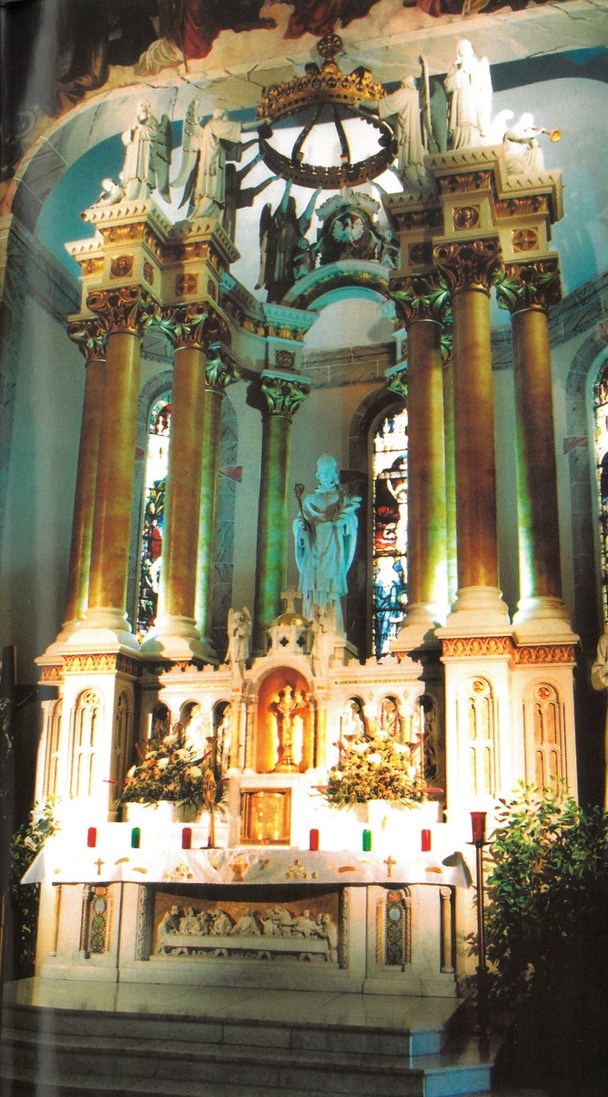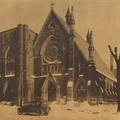Among the many Buffalo Diocese church buildings scheduled for termination are the following extraordinary architectural monuments.
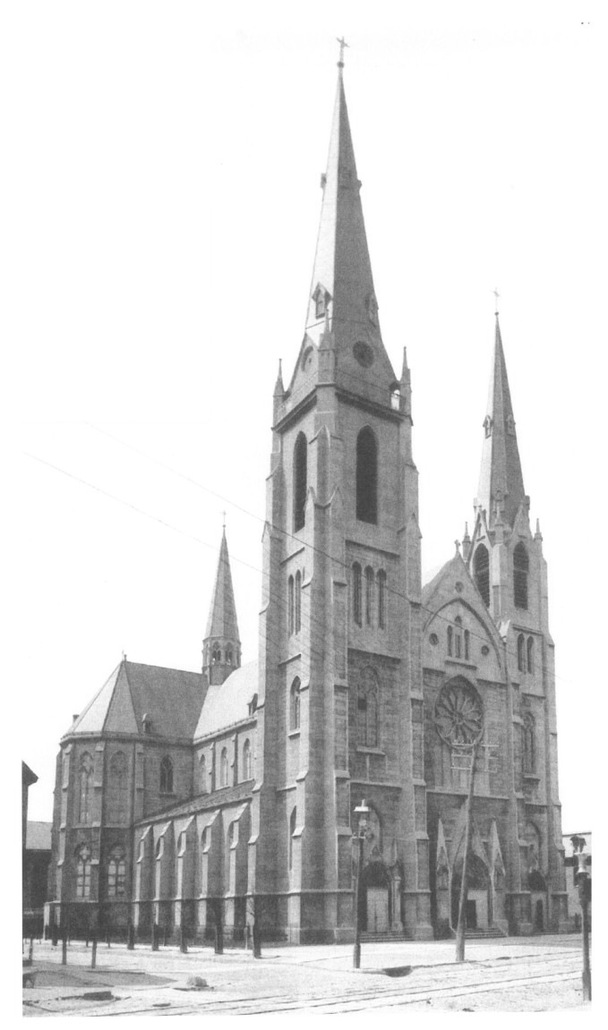
St. Ann, Broadway at Emslie street, Buffalo, c. 1900. Completed in 1886, the Gothic Revival church had two unequal towers evoking the profile of Chartres Cathedral in France. The spires of the towers were truncated in the 1940s.
Photos by William Koch
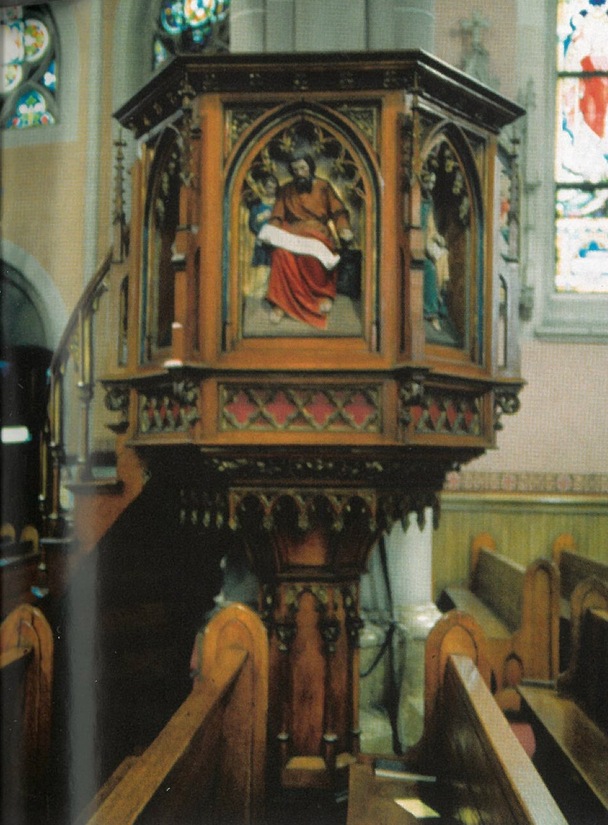
St. Ann’s carved polychrome pulpit. The gray gandeur of the exterior of St. Ann’s is a stark contrast to the vivid polychrome interior. In every direction, every surface of the interior of this church is intricately and lavishly ornamented in the gothic style. The pulpit exemplifies the high level of craftsmanship.
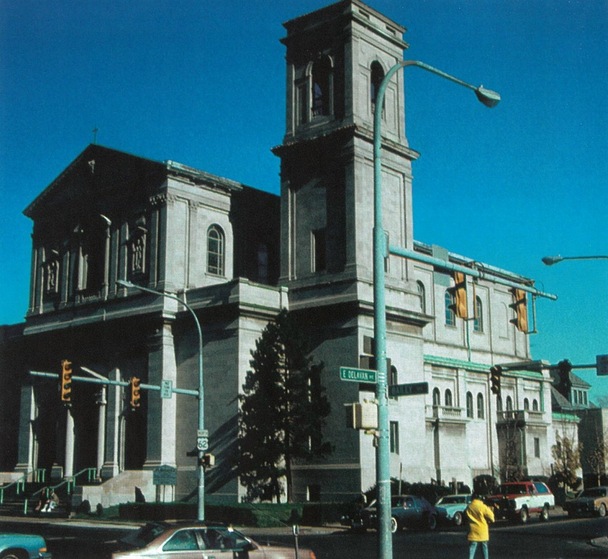
St. Gerard, Bailey Ave. at corner of East Delavan Ave., Buffalo. The cut stone edifice delicately and eruditely evokes the Classical Humanism of the Italian Renaissance. Designed by Karl Schmil & Sons, the church was begun in 1911 and was completed with clerestory and campanile in 1931.
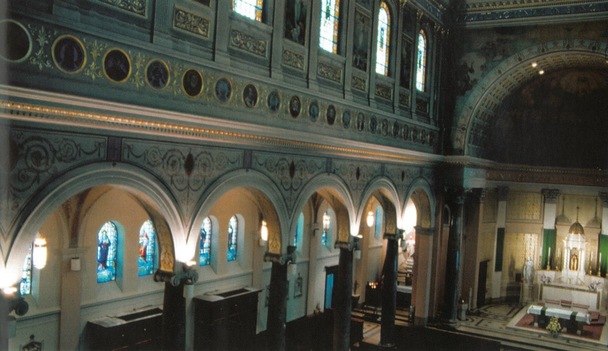
The famous St. Paul Outside the Walls in Rome, Italy, inspired the interior of St. Gerard. It is one-third the size of that Romanesque monument.
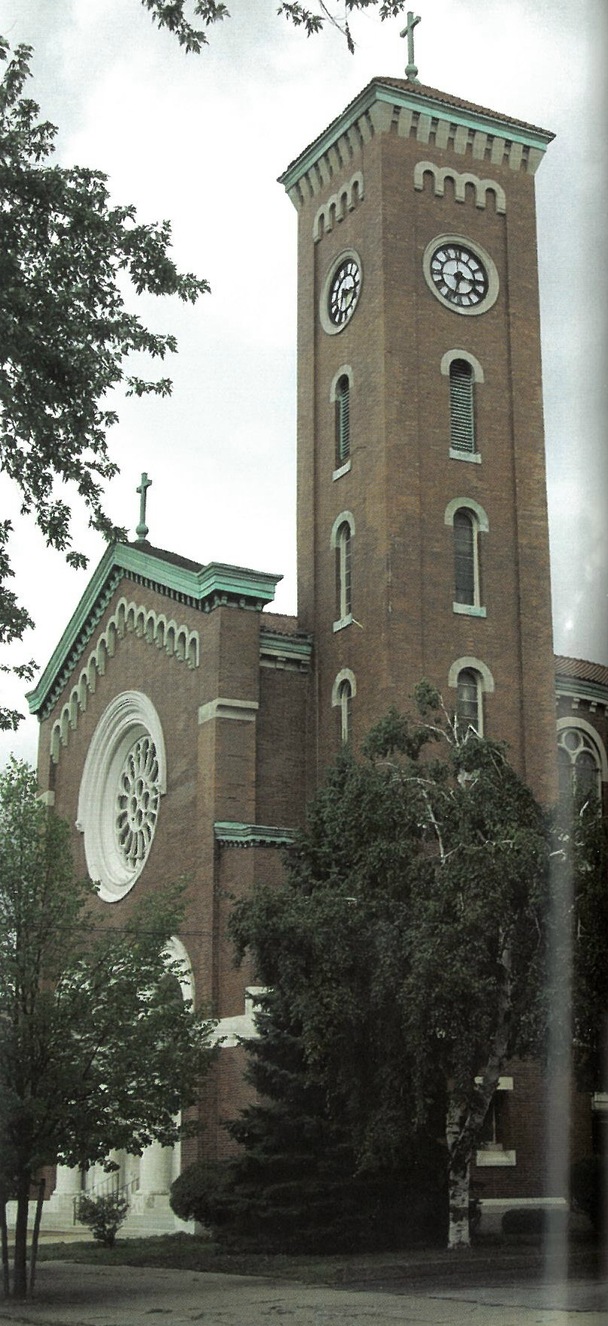
St. Francis Xavier, 157 East St., Buffalo. The striking brick and stone Lombard Romanesque basilica was built in 1911. Originally, the bell tower was even taller than it is now. Max G. Beierl was the architect.
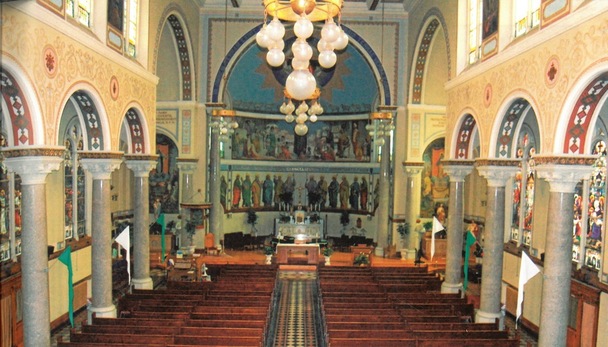
The interior of St. Francis Xavier, with arcades on polished marble columns bathed in natural light and a domed semi-circular apse, accurately incorporates the characteristic features in an early Christian basilica. A Benedictine monk executed the murals surrounding the main altar.
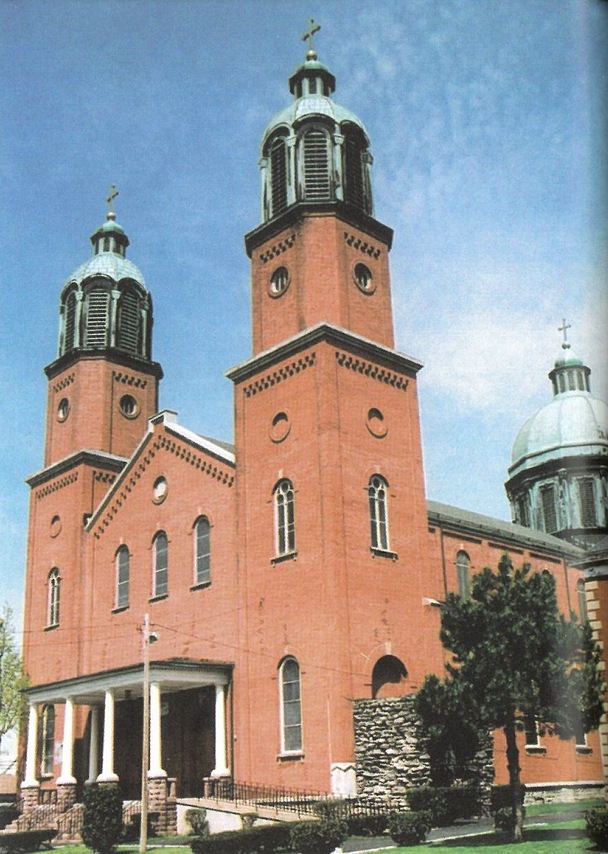
St. Adalbert Basilica, 212 Stanislaus St., Buffalo. The twin-towered churches of Buffalo’s east side are all of Polish origin. St. Stanislaus and Corpus Christi are still active, but St. Adealbert, named for the patron saint of Poland, is closing. The monumental edifice with a large copper-clad dome was completed in 1891. It is officially one of the oldest designated basilicas in the United States.
